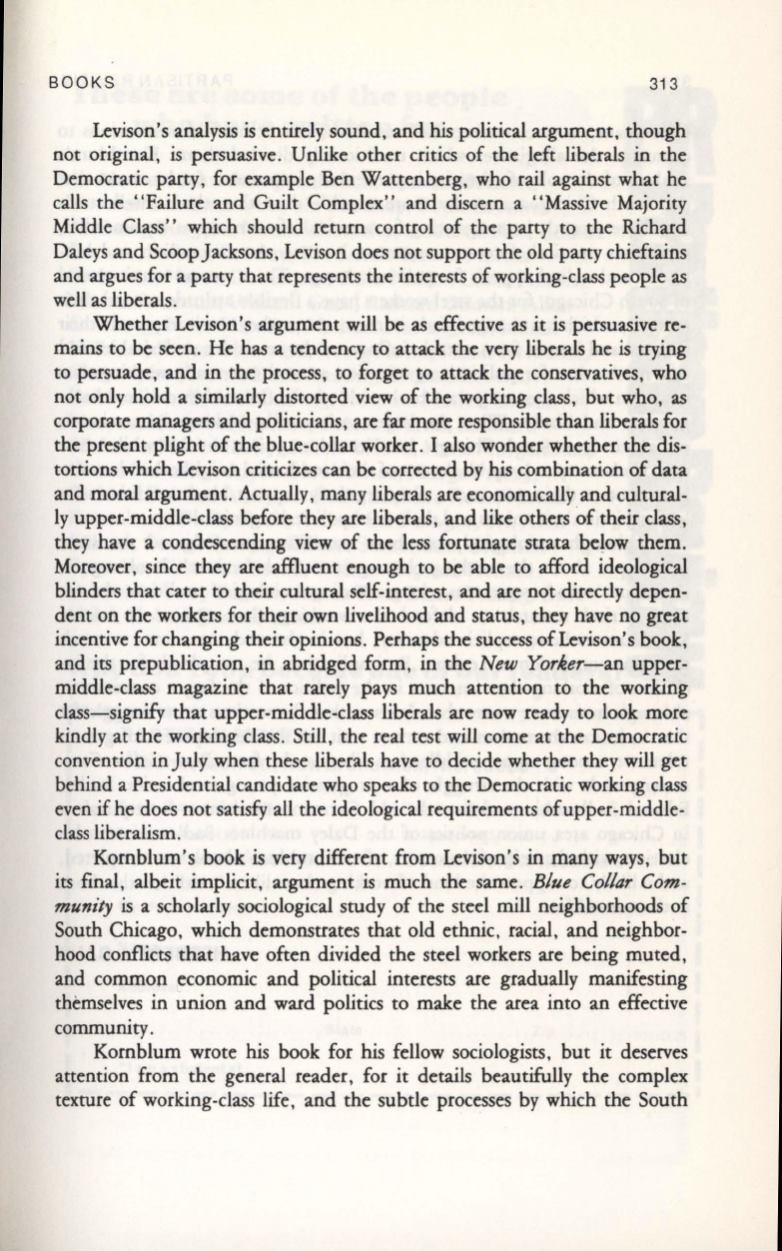
BOOKS
313
Levison's analysis is entirely sound, and his political argument, though
not original, is persuasive. Unlike other critics of the left liberals in the
Democratic party, for example Ben Wattenberg. who rail against what he
calls the "Failure and Guilt Complex" and discern a "Massive Majority
Middle Class" which should return control of the party to the Richard
Daleys and ScoopJacksons. Levison does not support the old party chieftains
and argues for a party that represents the interests of working-class people as
well as liberals.
Whether Levison's argument will be as effective as it is persuasive re–
mains to be seen. He has a tendency to attack the very liberals he is trying
to persuade. and in the process. to forget to attack the conservatives. who
not only hold a similarly distorted view of the working class. but who. as
corporate managers and politicians. are far more responsible than liberals for
the present plight of the blue-collar worker. I also wonder whether the dis–
tortions which Levison criticizes can be corrected by his combination of data
and moral argument. Actually, many liberals are economically and cultural–
ly upper-middle-class before they are liberals, and like others of their class.
they have a condescending view of the less fortunate strata below them.
Moreover. since they are affluent enough to be able to afford ideological
blinders that cater to their cultural self-interest. and are not directly depen–
dent on the workers for their own livelihood and status. they have no great
incentive for changing their opinions. Perhaps the success of Levison's book.
and its prepublication. in abridged form, in the
New Yorker-an
upper–
middle-class magazine that rarely pays much attention to the working
class-signify that upper-middle-class liberals are now ready to look more
kindly at the working class. Still. the real test will come at the Democratic
convention in July when these liberals have to decide whether they will get
behind a Presidential candidate who speaks
to
the Democratic working class
even if he does not satisfy all the ideological requirements ofupper-middle–
class liberalism.
Kornblum's book is very different from Levison's in many ways. but
its final. albeit implicit. argument is much the same.
Blue Collar Com–
munity
is a scholarly sociological study of the steel mill neighborhoods of
South Chicago. which demonstrates that old ethnic. racial. and neighbor–
hood conflicts that have often divided the steel workers are being muted.
and common economic and political interests are gradually manifesting
themselves in union and ward politics to make the area into an effective
community .
Kornblum wrote his book for his fellow sociologists. but it deserves
attention from the general reader. for it details beautifully the complex
texture of working-class life. and the subtle processes by which the South


